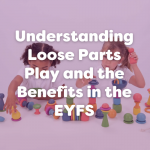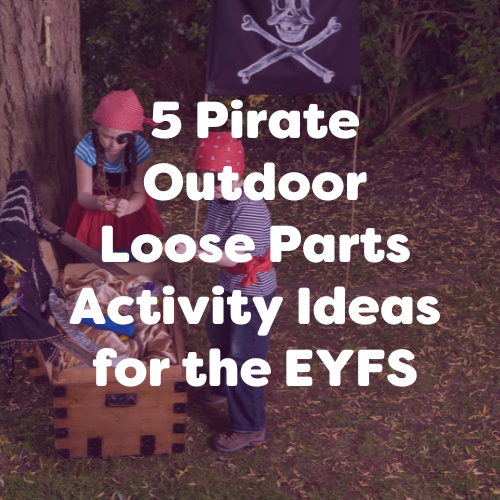In this blog we are going to delve into loose parts play, specifically outdoor loose parts play. We will be discussing the value and benefits as well as sharing 7 of our favourite ways to use loose parts outdoors. Read on for some inspiration for your summer outdoor activities!

What is Loose Parts Play?
Loose parts play is quite simply playing with objects that have no fixed definition or purpose. This includes but is not specific to: items that can be moved, constructed or deconstructed, carried, combined, large or small, natural or manmade. This could include:
- Outdoor construction crates
- Tyres for outdoor play
- Guttering
- Pipes
- Planks
- Wood offcuts for play areas
- Buckets
- Tubs
- and much more!
Put simply, loose parts play is a fantastically uninhibited invitation for children to explore the world around them and a budget friendly, resourceful way for childcare providers to provide play opportunities!
The benefits of outdoor loose parts play
- Allows children to set their own agenda in play, develop problem-solving skills and independence
- Connects children to the natural world as they explore outdoors
- Outdoor loose parts tend to be larger items which can be used to benefit gross motor skills and muscle development
- A brilliant way for early year’s settings to upcycle and recycle resources. This will increase children’s understanding of the world around them and teach important lessons for the future.
- Is a budget friendly, resourceful way to incorporate play that will inevitably be different from setting to setting and even from day to day as different pieces are added.
- The open ended nature of resources mean that play does not become boring. A stick is not a stick but could be a magic wand one day or a sword the next.
Outdoor loose parts play ideas:
1. Early Years Outdoor Construction
Construction is a very simple activity using loose parts that children can gain independence from. It encourages children to look at simple objects and problem solve to create the structure they desire. It also may require them to work collaboratively to complete their design and therefore help to develop teamwork and communication skills. Children can construct anything:
- A boat
- A car
- A castle
- Or simply a very, very tall tower!
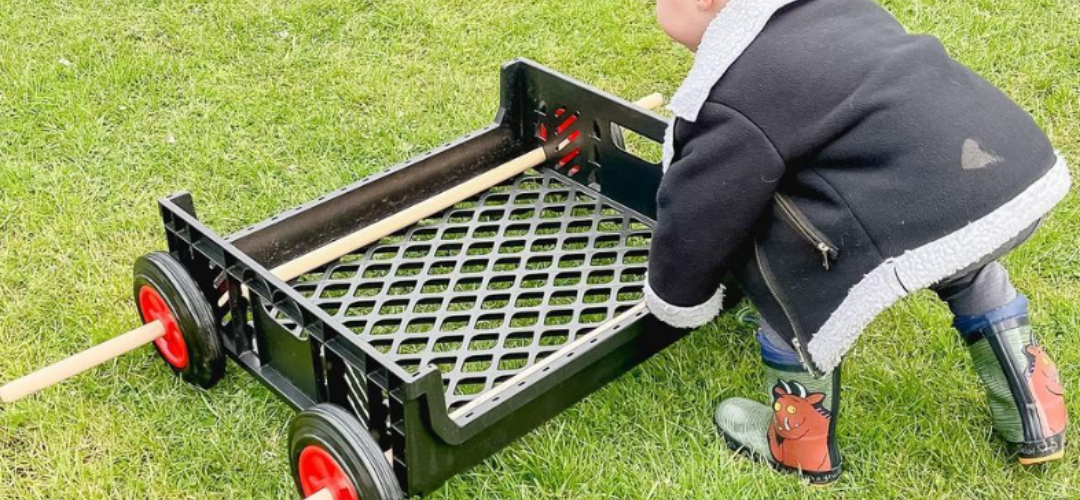
2. Outdoor Investigation
Loose parts pieces can be used very effectively for children to explore various scientific concepts and engage their curiosity…
- One example could be water channelling! Using pipes and gutters propped onto crates or tyres, children can experiment by adjusting heights and levels and observing the impact on the water flow.
- Similarly – children can explore gravity by propping planks up against other loose parts at various levels and watching the effect on balls or toy cars.
- Another example could be exploring weights of different objects. By balancing a plank over a tyre, various objects can be added to each end of the plank to explore the weight and properties of the objects.

3. Outdoor Obstacle Courses
An obstacle course is certainly one of the most simple yet effective way to make use of your outdoor loose parts. It has the added benefit of being adaptable and versatile – pieces can be added or removed or simply moved to make the course easier or harder.
Children will not only benefit in terms of physical development but creating their own obstacle courses will allow children to explore risk. Engaging in “risky play” allows children to understand their boundaries and develop a sense of power and independence over themselves which will develop in later life.
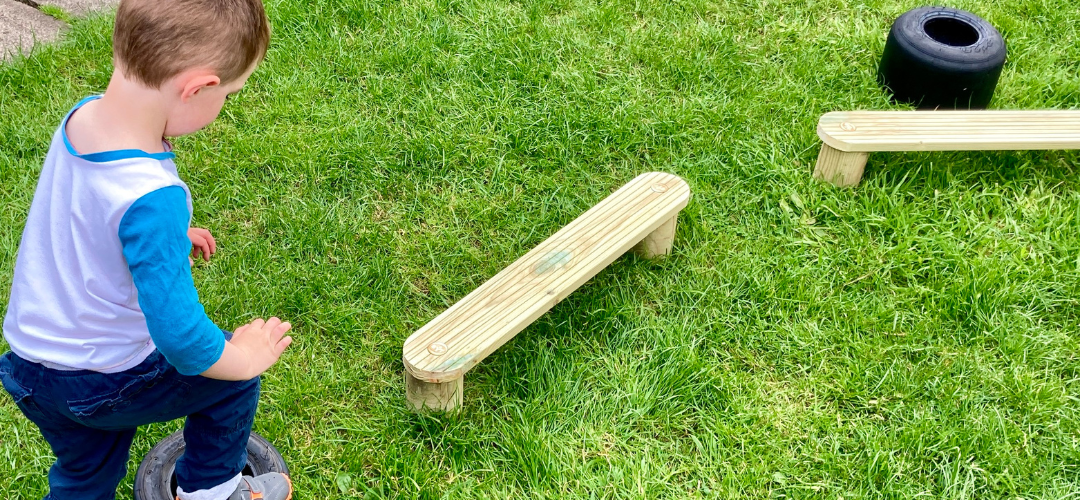
4. Build an Outdoor Den
Den building with loose parts allows children to not only create a structure completely of their own imagination but requires them to problem solve and plan ahead. As mentioned previously – the versatility of the loose parts mean that no special resources are required and the den in question can be adapted based on the size of your setting and your child’s desires! For a sturdy base why not try using crates with a waterproof material clipped into place?

5. Create Transient Outdoor Art
Transient art is yet another way for children to explore outdoor loose parts play. Typically done using natural materials such as sticks for a frame and collected resources such as flowers and leaves for the picture – outdoor loose parts will provide children with the opportunity to create much larger scale art pieces.
Why not encourage children to use planks or pipes as the frame and see what gigantic masterpieces they can make? Will the size of the task require it to be done as a team? What “images” can they create using random outdoor loose parts like crates, tyres and metal pots?
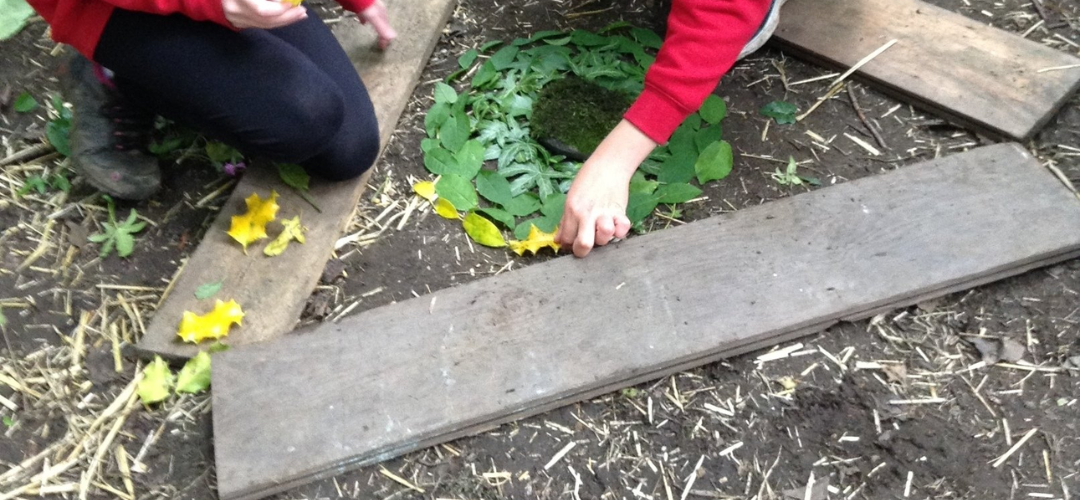
6. Explore Maths Concepts
Why not weave a bit of curricular learning into your outdoor loose parts play? This can be done easily by encouraging children to practice counting with the parts, sorting them by size, shape, colour or even by creating or replicating patterns.
Introducing these simple maths activities within outdoor play is a fantastic way for children to develop a love of learning and refresh their expectations of the classroom!
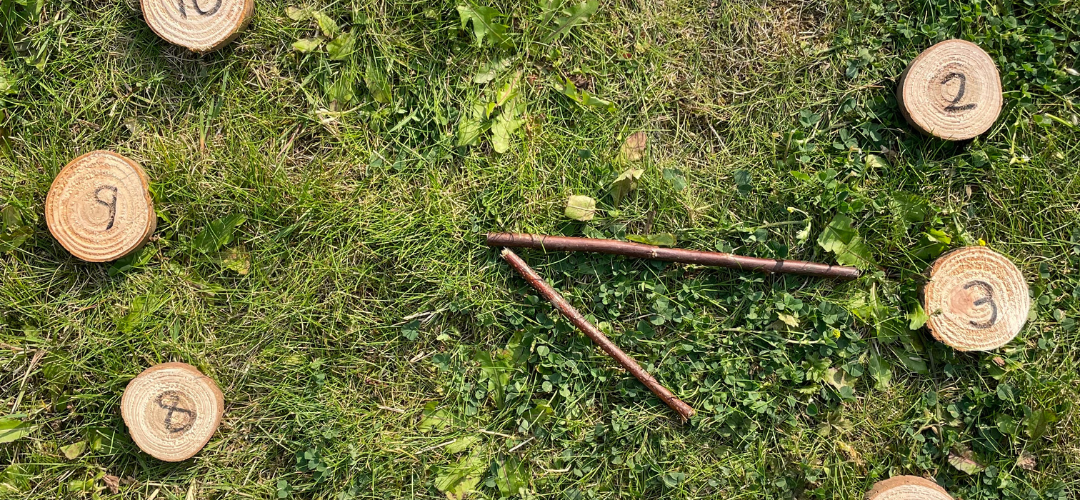
7. Outdoor Role Play
Our final suggestion is role play! Perhaps the easiest to facilitate – outdoor loose parts provide versatility and adaptability which means role play scenarios can be quickly changed and adapted and do not rely on specific resources. As opposed to smaller loose parts pieces, outdoor loose parts provide the opportunity for large scale imaginative play scenarios. For example:
- Children could use crates and planks to create a market shop or a mud kitchen
- Crates can be combined with tyres and broomstick handles to create vehicles such as trains or cars
- Children could replicate real world scenarios such as a building site with planks, buckets and smaller loose parts to increase their understanding of the world around them
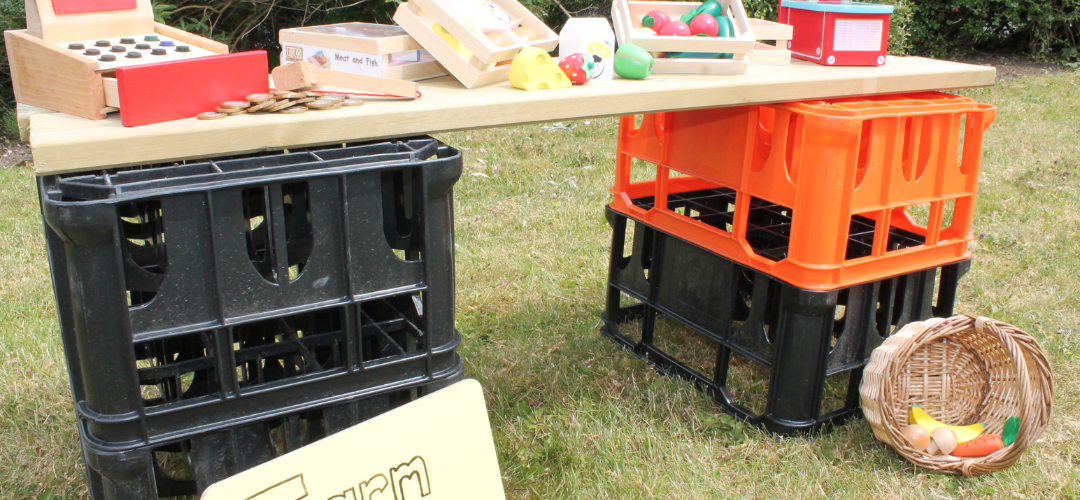
These activity ideas are just a few of our favourites! Outdoor loose parts can be used for an endless number of children’s activities or even used to support your setting! Why not try using them as storage solutions or makeshift seating?

We would love to see how you use your outdoor loose parts in your setting. Share your set ups and play ideas with us on social media by tagging us or using the hashtag #ExploreWithEYR


